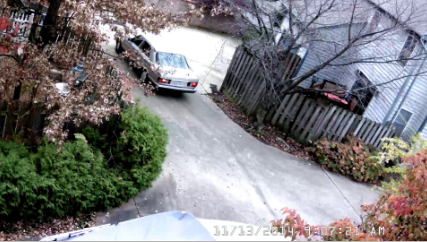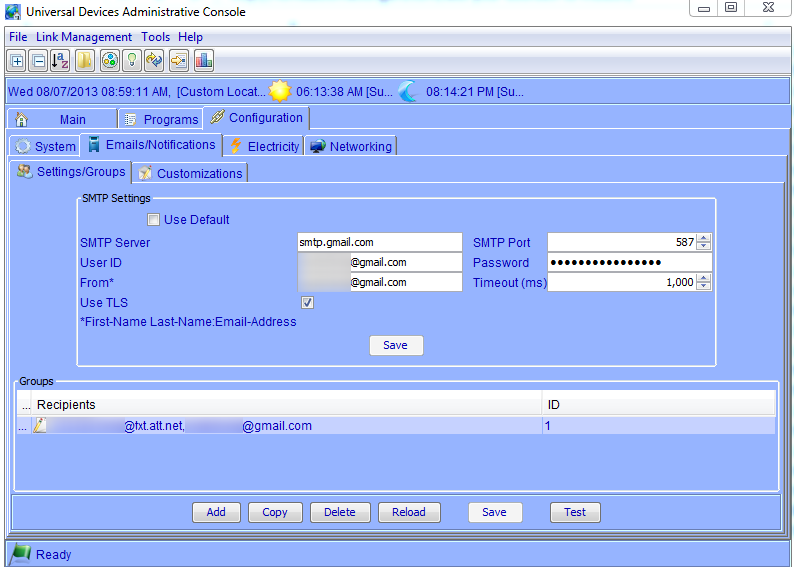Foscam cameras are great for indoor and outside covered areas, but I recently wanted to step up my security camera game by adding a high-res camera high on an outside wall exposed to the elements. I chose this TriVision 1080P outdoor WiFi camera, and got to work figuring out how to get power to where I wanted it.
The location I chose was really high on the wall just under the roof eave.
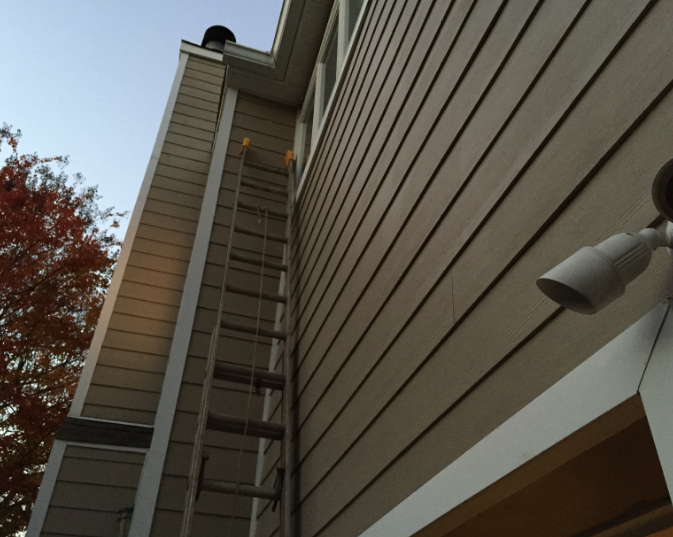
At first I planned to run power through the attic and go down, but that part of the attic was pretty inaccessible since my attic has 16 inches of blown-in insulation I got after a home energy audit, making it really hard to find studs to walk across. Then I realized that I actually had a power outlet on the other side of the wall in the bedroom. So after cutting open a patch of drywall and drilling a hole through the outer wall (and insulation), I had the power run for the camera going through to the outside (sealing the hole with foam to preserve the insulation).
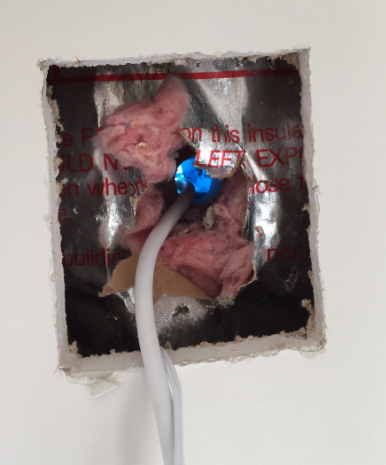
Next, (after cutting the power for safety), I plugged in the DC adapter to the outlet, and bored a little hole next to it to run the low-voltage wiring inside the wall (sealing the hole with spackle, shown roughed-in here):
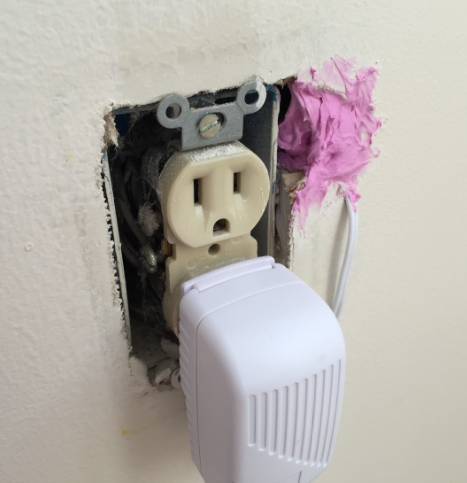
The DC wire runs up the wall and out the hole to the outside – here’s a shot showing the distance between the hole and outlet. Notice I had to drill a small guide hole in the middle because, as an outer wall, the cavity is filled with insulation so the wire needed a little coaxing to get down there.
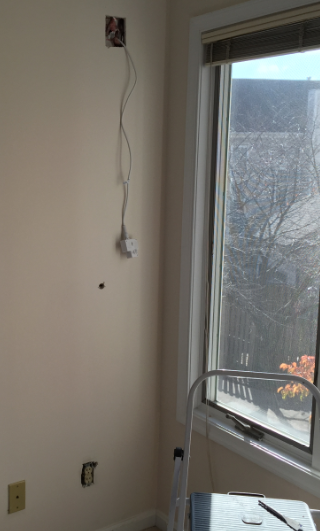
After patching and painting the wall, the camera was easy to mount on the outside, and now if I need to reboot the camera for some reason I can just unplug the adapter on the inside and plug it back in.

As for the quality of the TriVision camera itself, because it was so high I knew I’d need the higher (1080p) resolution to make out details in the broad field it covered. I haven’t been disappointed – it comes just short of being able to read license plates on cars. However, an interesting feature I haven’t tried out yet is the ability to install an SD-card in it so it can record video locally (then pull the video loop when needed later). The idea is that, without the limitations of wifi bandwidth or the image compression applied when recording the video using a tool like Blue Iris, the video quality would be better. Then when something happens you could just download the higher-resolution video at a later time.
